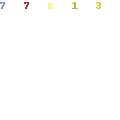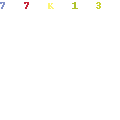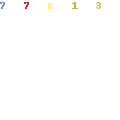What can not be done and what is not allowed to eat after each ultrasonic cleaning of teeth, after how long can you drink coffee, what recommendations do doctors give to patients who have undergone other hygiene procedures? Many mistakenly believe that by stepping outside the threshold of the dental office, you can sparkle with a snow-white smile and at the same time eat whatever you want. In fact, it is important to maintain a certain time interval during which hard and soft tissues must fully recover after exposure to ultrasound.

There are also general care instructions. Compliance with these rules will fix the effect for a long time.
How often should you have your teeth cleaned at the dentist?
It is better to visit the clinic every six months. This is enough to prevent dental diseases and eliminate accumulated deposits.
The procedure itself does not last long, about half an hour or a little more. The doctor first assesses the condition of the oral cavity, and then gives a conclusion about the possibility or impossibility of occupational treatment. If necessary, the filling is performed, and implants, prostheses, and other orthopedic structures are installed. Thus, if there is a pathological process in the mouth, it is first of all important to get rid of it, and only then proceed to eliminate plaque and whiten the units.
Rules for patients: how long can you eat after brushing your teeth from the stone and what should not be consumed
The recovery period averages about 2-3 weeks. It is strictly not recommended to eat certain products. This threatens to darken and pigment the enamel. If you ignore the established requirements, the expensive procedure will be useless. You will have to contact the dental clinic again and repeat all the manipulations.
Snow-white incisors, canines, and molars are afraid not only of bright pigments but also of mechanical impact. Hard treats like nuts, chips, and seeds are also important to exclude for a while.
What is allowed to use
For several weeks after the procedure, you need to follow a special diet. It is necessary to exclude from the diet everything that can stain the tooth surfaces. However, the menu is not limited.
What foods can be eaten after hygienic brushing of teeth (what not to do is discussed in the next subsection):
- Meat of any kind is fatty and not very. It is recommended to cook softer dishes, such as meatballs, cabbage rolls, and goulash.
- Millet porridge, rice, mashed potatoes, oatmeal, and pasta can be used as side dishes.
- Meat broths, soups (including creamy ones).
- Vegetables and fruits of neutral shades and not too acidic (potatoes, cabbage, white beans, zucchini, banana, pear).
- Grapes, melon, and other berries.
- Drinks without gas. If you want to drink juice, it should first be diluted with clean drinking water.
- Dairy products. It can be cottage cheese, sour cream, milk, cheese, or yogurt without additives.
- Almost any bread (rye, bran, white).
- Eggs (omelet, fried, boiled).
Confectionery products are allowed (marmalade, marshmallows, pastries, cakes, and pastries with buttercream). Food should not be too cold or hot. Temperature changes increase sensitivity and irritate the gums.
What not to eat and drink after brushing your teeth from tartar
For the first few weeks, it is important to refrain from food containing dyes. It does not matter what origin they are, natural or not.

After professional hygiene, the use of products such as:
- Coffee, strong black tea, cocoa, hot chocolate, compote, fruit drink, soda;
- Borsch, tomato soup, and other dishes of bright colors;
- Black bread;
- Buckwheat grain;
- Strongly coloring berries, for example, strawberries, blueberries, raspberries, cranberries,
- Pomegranates, watermelons, cherries, sweet cherries;
- From vegetables, carrots, and beets, tomatoes are not suitable;
- Grapefruits, oranges, lemons, plums, and kiwi are prohibited from being fruits;
- Sauces (mustard, tomato, including ketchup, curry, sweet and sour);
- Chocolate (except white), caramel, jam, ice cream, multi-colored jelly, and other sweets with contrasting dyes;
- Spices (paprika, turmeric, nutmeg, cinnamon).
If nevertheless, one of the above was eaten, you must immediately rinse your mouth with clean water, it is better to additionally brush your teeth with a brush and paste. It is not recommended to eat irritating foods:
- Nuts, chips, crackers;
- Viscous and sticky toffee;
- Dishes with high acidity (concentrated juices, apples, citrus fruits);
- Acute;
- Too hot or cold.
Is it drinkable
Drinking, of course, is not contraindicated. At the same time, it is important to choose suitable drinks that cannot provoke the darkening of the hardness and inflammation of soft tissues. Pigments in sweet soda, compotes, concentrated juices, fruit drinks, tea, and coffee products stain cleaned incisors, canines, and molars. Let’s see what is possible after professional teeth cleaning and what cannot be done: why there is a 2-3-week ban on the use of your favorite foods.
Is tea allowed
Black is contraindicated in any form and concentration. As for green, everything is not so clear-cut. It is very useful for the oral cavity, as it helps to strengthen the enamel, eliminates bacterial flora, and reduces the risk of developing caries.
At first glance, it seems that a practically colorless liquid is not capable of causing coloration. However, in fact, it contains tannic components that provoke yellowness.
Thus, hygienists advise against consuming any existing teas for 2-3 weeks.
Is coffee allowed
When looking at whether you can eat, smoke, and drink after brushing your teeth, caffeinated drinks come to mind first. This product is classified as prohibited because it contains a coloring pigment that darkens the enamel. If you don’t have the strength to refuse your favorite invigorating energy drink, it’s enough to endure a couple of days without it, but it’s better to abstain throughout the entire recovery period.
If this advice is ignored, the incisors, canines, and molars will turn gray and acquire a shade even darker than before the ultrasound. All microscopic cracks, chips, and pores are pigmented, and it will be extremely difficult to remove all this from surfaces.
Related post: Understanding Fibroma of the Gums and Its Treatments in the Oral Cavity
Some patients can still leave coffee in the diet, but only if they dilute it heavily with milk or cream in advance, cool it to a comfortable room temperature and drink it through a straw. After that, it is important to rinse the mouth with clean drinking water or a special rinse.
Alcohol
Alcoholic drinks are not a contraindication after professional ultrasonic cleaning of teeth, dentists do not express categorical prohibitions. The product does not adversely affect the cleaned enamel. However, it is important to remember that some of its varieties are undesirable.
After cleansing and bleaching, do not use products with dyes. If present, it is better to refrain from drinking. This feature is typical for wine (contains dyes of natural origin), and low-alcohol cocktails of bright colors. Any alcohol that has been kept in the refrigerator for a long time is also contraindicated.
If the drink is still drunk, it is necessary to rinse the mouth thoroughly after that. It is advisable to use a special rinse aid, but in its absence, you can take clean drinking water.
Most doctors still recommend abstaining from alcohol for a couple of days. This will help to consolidate the results of cleaning procedures and protect a person from possible negative consequences.
Can I smoke
What not to do after professional ultrasonic cleaning of teeth at the dentist is to go back to cigarettes. Nicotine is the strongest dye, just like coffee and wine. Resins, together with carcinogens, are deposited on the hard surfaces of incisors, canines, and molars, creating an ideal environment for the growth and reproduction of pathogenic microorganisms. Tobacco in general negatively affects bone tissue, contributing to its destruction, and killing beneficial bacteria.
When cleaning is carried out in the dental office, the protective film is removed from the enamel. As a result, the outer layer absorbs resinous compounds and acquires a yellowish tint after a few days.

Also, during the procedure, mucous membranes can be damaged. Toxins from cigarettes get inside and provoke a strong inflammatory process that can go to the entire maxillofacial apparatus.
Smokers often suffer from bleeding, dryness, and loss of gums. There is a narrowing of the capillaries, and the gum tissue weakens, dehydrates, and the oxygen concentration decreases. Because of this, caries, pulpitis, gingivitis, and periodontal disease occur. If you do not wait for healing and smoke, infection will occur, which can subsequently lead to the destruction and loss of rental units.
Why does my breath smell even after brushing my teeth?
An unpleasant odor in most cases appears with the accumulation of hard and soft deposits in the interdental spaces. Therefore, the main reason for its preservation after ultrasound remains poor-quality cleaning of the oral cavity. Most often, dentists do not clean the subgingival space well enough. In such a situation, periodontal pockets accumulate plaque, and periodontitis or periodontal disease develops.
If the patient is absolutely healthy, the following factors can lead to halitosis:
- Poor hygiene. If a person continues to use the brush and paste irregularly, the effect of professional cleaning will quickly disappear.
- Insufficient cleanliness of removable structures after prosthetics.
- Inclusion in the diet of foods that smell strongly. This includes onions, garlic, canned fish, etc.
- Inflammatory processes, extensive carious lesions, neoplasms (cysts).
- Problems with the gastrointestinal tract (gastritis, peptic ulcer), liver, and kidneys.
- Chronic diseases of the upper respiratory tract (tonsillitis, sinusitis).
- Diabetes mellitus (acetone smell is felt from the oral cavity).
- Drug therapy uses certain drugs (antibacterials, antidepressants, medicines for allergies, and high or low blood pressure).
- Pathological dryness of the mucous membranes. Not enough saliva is produced in the mouth. It is needed not only to moisturize soft and hard tissues but also to remove pathogenic agents (bacteria, microbes) and regenerate.
If the stench persists after ultrasonic cleaning, it is recommended to visit a doctor. It will take both a dentist and other narrow specialists to establish the exact causes of this phenomenon and develop further therapeutic tactics.
Recommendations after professional teeth cleaning at the dentist, what you can eat
The procedure is safe and does not lead to negative consequences. However, hard and soft tissues are still injured to varying degrees. During the first few weeks, enamel and gums are especially sensitive and require special care. Despite the fact that ultrasound is considered the most perfect and effective method, complications can occur in the form of inflammation and increased susceptibility to external influences.
Pro Tips:
- If the pain does not go away for a long time, painkillers do not help, then you need to urgently visit a dental clinic;
- Pharmacy gels and ointments are used to relieve the inflammatory process;
- It is important to monitor the nutrition and temperature of food, and drinks;
- It is worth buying a suitable brush and paste.
Rules for oral care after brushing
General principles, the observance of which will help prevent the development of complications and allow you to maintain a snow-white smile for a long time:
- Change the brush if it is no longer usable. Pathogenic microorganisms accumulate on its surface with each use, which can penetrate the wounds on the mucous membranes in the mouth and cause inflammation.
- Pastes without abrasives. Rigid tools leave behind small scratches. During recovery, it is recommended to use cleansing gels, they are much more delicate. Their composition must present fluorine and calcium in sufficient concentration. If you need to restore the gums, the content of extracts of medicinal plants in the product is important. Brushing your teeth when you can already eat, smoke and drink (after the expiration of the three-week period) can be carried out as usual.
- Do not use rinse aids containing alcohol. Despite the fact that it is an excellent antiseptic, it causes irritation and pain. Disinfection can be achieved using safe Miramistin, and Rotokan.
- Rinsing with herbal decoctions and infusions is prohibited. Otherwise, pigmentation and yellowing of incisors, canines, and molars may occur. In the pharmacy, you can buy special pomace that does not lead to staining.
- Use of additional hygiene devices. To achieve the best effect, along with daily cleaning procedures, threads (floss), irrigators, and special brushes for interdental spaces are used.
- Overlay applications. They help stop bleeding and inflammation and speed up the regeneration process. For this purpose, anti-inflammatory gels are applied to the mucous membranes, example, Metrogil Denta.
- A diet with the exclusion of prohibited foods with pigments and irritating foods.
- Regular preventive check-ups at the dentist. This must be done at least once a year. If the patient has dentures or has a tendency to carious lesions and other problems, visits to the doctor should be made every six months.
All of the above tips are suitable for any type of professional processing, not only ultrasonic. If all recommendations are followed, full recovery is possible in 2-3 weeks.
Summing up
So, we figured out what you can eat and what you can’t do after hygienic cleaning of your teeth with ultrasound. This information should not be a reason to refuse the procedure. Professional cleansing guarantees quick painless removal of plaque, and stone and helps to maintain a snow-white Hollywood smile for a long time. Within 2-3 weeks after visiting the dentist’s office, all discomfort will disappear, and you can return to your usual lifestyle.